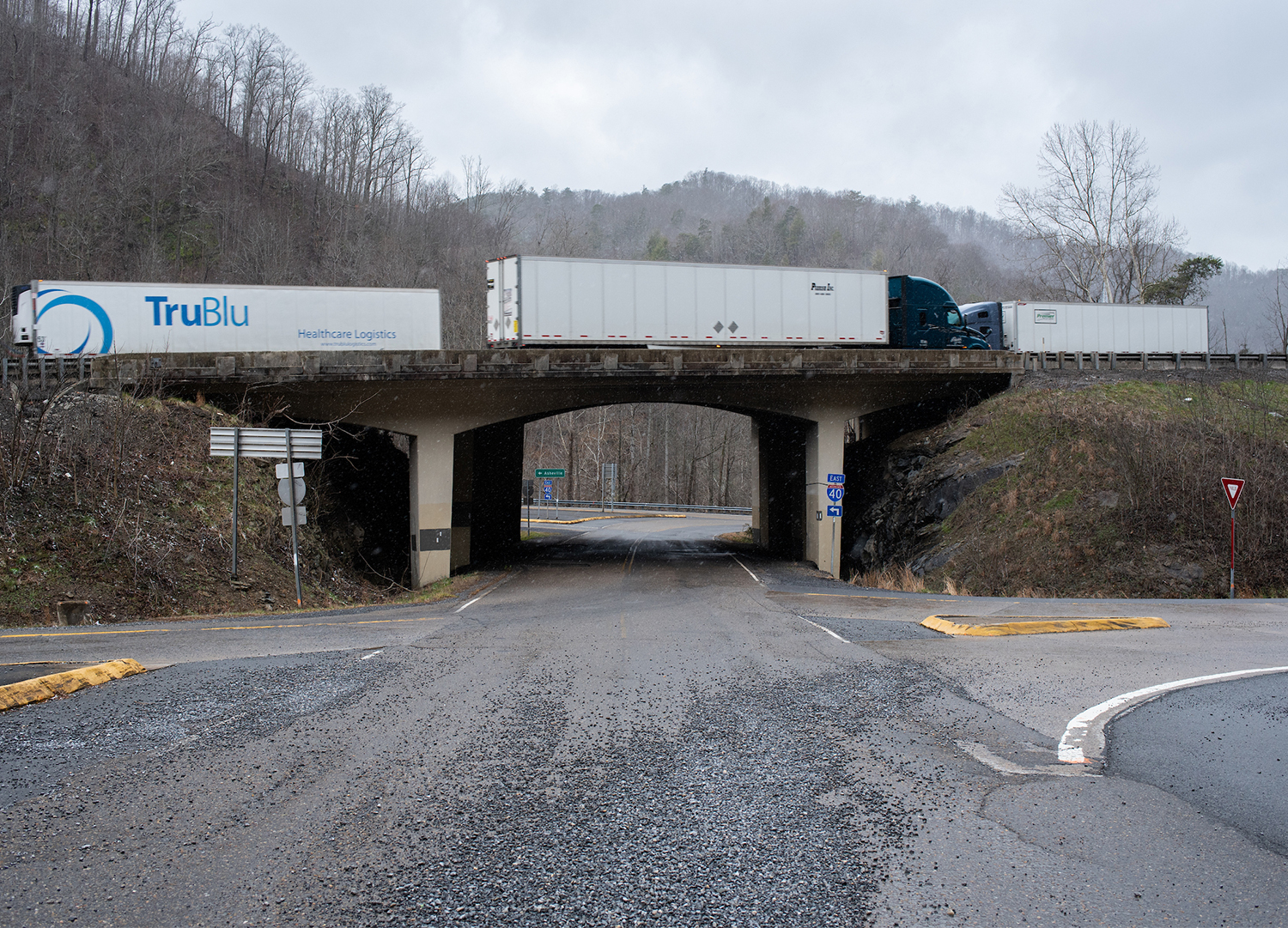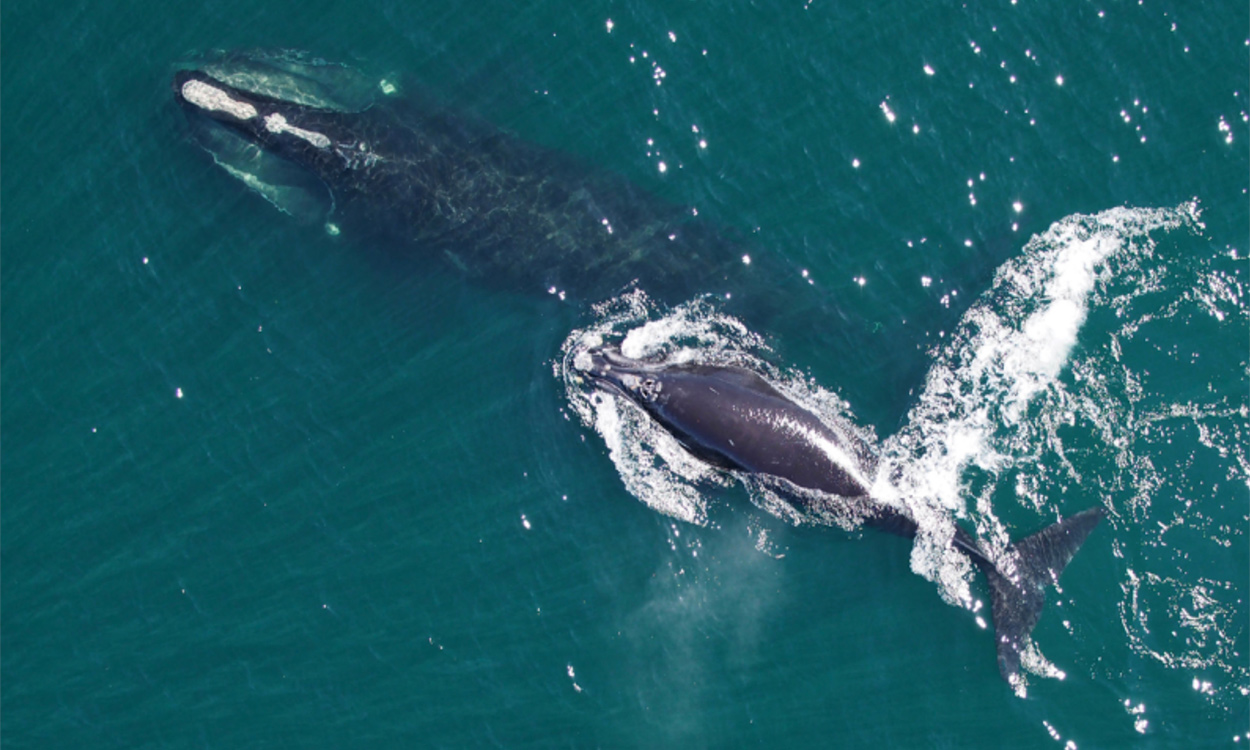






Alumna Helping Local Wildlife
Alumna Liz Hillard is collecting data that will help wildlife safely cross I-40
Anyone who has ever traveled along Interstate 40 through the Pigeon River Gorge near the North Carolina-Tennessee border knows how dangerous that stretch of highway can be.
With its narrow lanes, twisting and winding curves through the mountains, rockslides, and speeding drivers, that portion of highway has been notorious for accidents. Well, just imagine what it must be like for wildlife living in those beautiful mountains that make up Great Smoky Mountains National Park, and Pisgah and Cherokee national forests.
Liz Hillard, a Western Carolina University alumna with a master’s degree in biology, has spent the last year and a half studying how wildlife such as elk and bears cross I-40. Hillard, who is a wildlife scientist at Wildlands Network, is collecting research and data in collaboration with the National Parks Conservation Association, North Carolina Wildlife Resource Commission, Great Smoky Mountains National Park, Rocky Mountain Elk Foundation and National Wildlife Federation.


Wildlife corridors are being examined across the country as scientists study the patterns of movement of different populations of organisms trying to get access to food or mates.
As I-40 snakes its way through the Great Smoky Mountains National Park on one side and Pisgah and Cherokee National Forests on the other, wildlife is trying to move from one side to the other.
“Our research is multifaceted,” Hillard said. “We’re recording and collecting wildlife vehicle mortality locations, monitoring wildlife activity with camera traps and using GPS collars to identify elk crossing locations and understand how elk move through the landscape. We’ll be using this information to help guide where mitigation strategies should be focused along the roadway to help connect wildlife habitat, ensure safe passage for wildlife and improve human safety.”



As part of the data-collecting process, Hillard and others placed GPS collars on several elk to study their movement. They found that many of the elk cross I-40 at the Waterville exit underpass, which is the first exit in Tennessee after crossing the North Carolina-Tennessee state line.
“I receive hourly locations from the elk GPS collars and so in real time, I can actually watch where the elk are moving,” Hillard said. “We’re trying to understand where elk cross the interstate, but also how landscape features such as topography and vegetation influence their movement. They do use this Waterville underpass to safely cross the roadway, which is impressive. We’re essentially trying to create something like this, safe passageways separate from the interstate.”
Hillard said the group will continue collecting data for about another year. From there, they will perform data analysis and put together reports showing where animals will benefit most from mitigation efforts along the roadway structure.
That information will be shared with the N.C. Department of Transportation to help guide where they could help wildlife cross the road safely, Hillard said.
When the project began about two years ago, organizers determined there was a need for someone with expertise with elk in Appalachia. Fortunately for Hillard, WCU groomed her for the position.
After completing her undergraduate work at Southern Illinois University, Hillard came to WCU to complete her master’s degree in biology. Working with Laura DeWald, WCU associate professor of environmental science, natural resource conservation and management, and biology, Hillard credits her hands-on experience at WCU for preparing her for her current job. While completing her master’s work, Hillard studied elk resource selection in Great Smoky Mountain National Park since their re-introduction.

“I got to ask questions, design research projects, go out and conduct the research, and put all that together, analyze it and write papers,” Hillard said. “I found out I had a passion for research. I was very much supported by the other faculty to pursue my doctorate, which wasn’t really an idea for me at the time, but because my experience was so good, it just led me to continue my education and that’s how I got this great wildlife scientist job working for this great organization.”
Hillard received her doctorate at Southern Illinois, but she knew she always wanted to return to the Appalachian Mountains. And now she gets to roam the mountains doing work she is passionate about.
“There’s currently a lot of interest in wildlife overpasses and underpasses to promote safe wildlife passage,” Hillard said. “People are really starting to identify the impacts that roads have on wildlife. Not only do they cause mortality along the road, but they also reduce and limit wildlife access to resources and mates. If we think about the smaller organisms out here, things like salamanders or even turtles, not being able to cross the roadway, genetically they become isolated. That can lead to localized extinction if we have catastrophic events.”
About the Master of Science in Biology Program
Program Overview
Location: Cullowhee, Main Campus
Prerequisites: GRE, preferred score 300
Full-Time or Part-Time
App Deadline: Jan. 1, May 1, Aug. 1
Close proximity to research facilities

